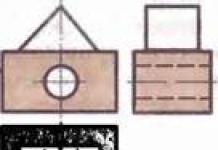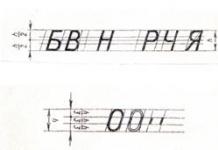The most famous and widely used spherical reflector is the beauty dish.
There is no guarantee that the lamp in your particular beauty dish is in focus. There are so many shapes, sizes and positions of beauty dish lamps for as many manufacturers as there are. You yourself will be able to evaluate what you have knowing the principle.

beauty dish side view - spherical shape


beauty dish without honeycomb - you can see the deflector in the center

Honeycombs. in this case, these are honeycombs for a standard reflector, but the honeycombs for a beauty dish are the same, differing only in the mounting principle
A beauty dish differs from other reflectors, firstly, in its rather large size, and secondly, in the presence of a deflector (a separate small reflector in the center), which reflects part of the light in the center of the dish onto the main reflector, thereby evening out the illumination of the light spot.

beauty dish without honeycomb


beauty dish with honeycomb and fabric diffuser


Scope of application
Portrait photography, mainly of young people. A beauty dish with honeycomb gives a wonderful, moderately contrasting light. Not too soft and not too hard, like elliptical reflectors. But there really are no boundaries. It can also be used to highlight hair when there is a shortage of elliptical reflectors and in other cases when you need a large, even spot of light. I recommend using a beauty dish with honeycomb, otherwise the spot will be too diffuse. The fabric diffuser gives too soft a light in my opinion. Can be used when not available. One of the huge advantages of a beauty dish is its portability. You can put it in the trunk and go to the shoot. Upon arrival, just take it out and put it on the flash. There is no time wasted on assembling the softbox, and the pictures come out very contrasty and interesting.
The beauty plate can have different surface materials: silver or matte white. Silver gives a slightly harsher and more contrasting light. The surface of this material is usually shagreen (i.e. not smooth) so that the flow of light comes out more uniformly.
Sample shots using a beauty dish

portrait using a beauty plate


using a honeycomb beauty dish in the studio
The beauty dish gives a characteristic highlight to the model's eyes.

the glare in the eyes from the beauty plate
Beauty dish shape depending on manufacturer
The most famous manufacturers of photographic equipment, such as Broncolor and Profoto, produce parabolic beauty dishes. They are more difficult to produce and more expensive, but are designed to focus the light spot more accurately. Similar plates look like this...



U Broncolor The beauty dish comes in two versions: a matte white surface called Softlight reflector P-Soft and with a silvery shagreen surface called Beauty Dish reflector.
If you're interested in getting ahead in portrait photography with a beauty dish, but aren't sure if it's worth investing in, then I'll show you how to try the beauty dish lighting style in ten minutes and a few dollars.
All you need is a regular old 60cm softbox, which comes in both single light and strobe kits. This will quickly and easily help you decide if an investment of $100-200 is worth it for you. In addition to the softbox, you will need three popsicle sticks (or garden rods, thin dowels, etc.), aluminum foil, and a sheet of black poster paper the size of your softbox.
How works portrait plate
A beauty dish is a large dish with a hole in it that holds the flash. It is almost parabolic with a focal point, which is usually located inside the dish. At this focal point there is a reflector that prevents direct light from hitting the subject, and instead redirects it away from the inner surface of the dish. This reflector tends to produce two patches of light on the surface of the dish; one is located directly around the reflector, and the other is on the rim of the dish.
My actual beauty dish which I will use for comparison.
Thus it can be seen that the main mechanism of the beauty dish is concentrated in the internal reflective plate, and the characteristic highlights emanate from it and the roundness of the dish. These two features are fairly easy to replicate. This is exactly what I want to show you today.
Prepare the softbox
Since the beauty dish is not supposed to have a diffuser panel ("toe") on top, we remove the diffuser that is typically used on a softbox. Partitions too, if available. It is preferable to make the softbox round, but this is not so easy if you have an octagon, such as the Westcott Rapid Box (26") or Rapid Box Mini (20").
If you still don't have an octagon, don't worry as we'll fix that problem in the next step.
Cut out gobo
To make the softbox round, we'll make a simple round gobo ("go between," light shaping template) and attach it in front of the softbox. It's quite simple. Cut your Whatman paper to the size of the softbox; If you wish, you can leave about an inch on each side to eliminate the passage of light, and mark the center by drawing diagonals from the corners.

The center is marked - I left the paper rectangular, which will be very useful later.
Attach a pin at the center point, tie a string to it so it rotates freely, and measure 11 inches. At this mark, attach a pencil to the thread. Now you can easily trace a circle, just like using a compass.

Draw a circle quickly and easily. Well, something like a circle.
Cut out a circle and attach the paper to the softbox in a manner that suits your needs. I used electrical tape.

The extra length gave me the opportunity to fit the paper inside the software. This is done for greater density.
Interiorreflector
Now we need to make the internal reflector. To do this, take aluminum foil, mine was 12x8", fold it on all sides to make a square the size of the adapter ring. Then fold the corners to make an octagon, and then fold the resulting corners to make a circle.
Now it's time to attach it to the softbox adapter ring using the sticks you have prepared. I use two Popsicle sticks wrapped in duct tape and attach them to the back of the reflector with the tip exposed.

Attach the reflector to the adapter ring with the shiny side facing in for a great beauty dish! You can add another stick at the bottom to prevent tipping over, and the folded edges will help prevent sagging and bending.

Secure the sticks at the top and bottom. Note the circles that remain visible and this is a cheap softbox.
Time take off!
As you can see above, the light output matches the beauty dish quite well (despite the specular differences between the white and silver interior), so now we can start shooting!
Here are some comparison photos that I took desaturated to better judge the lighting; I think this is a great job of simulating a beauty plate for pennies:

A beauty dish was used.

The softbox was used in its original form.

Used imitated portrait plate. Not bad! The result may not be identical, but it is surprisingly close to the original. (Apparently I was shooting above the sync speed on these frames?)
Find out if you're ready to buy
If you're on the fence about purchasing a beauty plate, this quick trick should help you out. If you're willing to sacrifice a softbox for a while, you can use this design until a beauty dish becomes affordable or justifiable for you. You can also use a small, shallow octagon to make a durable internal reflector out of metal or plastic and use it as a two-in-one system instead of lugging around a beauty dish too!

This light converter is sometimes called a beauty dish, sometimes a soft reflector, sometimes just a dish. Beauty dish is called it in countries where it is customary to communicate in English. This translates as a beautiful dish.
As a rule, these devices have two main characteristics - the diameter of the plate and the color with which the surface of the recess is painted. In addition, the soft reflector may have additional equipment. Namely, honeycombs and fabric diffuser. However, let's look at this device in more detail...

What is a white diffuser
By equipping a beauty dish with a white diffuser, you can get a so-called round softbox.
As a rule, a beauty dish is equipped with such a diffuser, despite the fact that a professional photographer rarely needs it. After all, such a diffuser, or, as the Anglo-Saxons say, a sock, eliminates the very essence of a portrait dish, the task of which is to create directional light.
However, if you purchased a plate without such equipment, you can easily make it yourself. You just need to use a fabric that can withstand high enough temperatures.
Why do we need mounts?
As for the mounts, everything is clear. The plate is mounted into the bayonet mount available on the device. However, you can always choose a converter that has screws on the back. For example, RAYLAB cymbals. This allows for quick adapter replacement. In any case, the professionals from the Bomber store are always ready to advise you. We will select the best equipment option for you.
Company Profoto began production of beauty dish systems OCF(Off-Camera Flash). These beauty plates are distinguished by the fact that they are collapsible and lightweight.
Why do you need OCF Beauty Dish?
A system was invented Profoto Off-Camera Flashes(OCF) for two mobile flashes from Profoto - and . Both are revolutionary outbreaks. - wireless system with a battery inside and relatively high power (500 J), - light heads are connected to a battery generator (power 250 J).
For comparison, I’ll give you a classic beauty plate.

This is what we will compare with.
The fact is that the classic beauty plate is not called “Beauty dish” for nothing.

It provides moderately soft light that preserves the contrast of the image. Beauty plates are convenient for photographing fashion and children, or, more simply, all young people.
But taking a classic portrait plate with you into nature is a hassle. It is quite large (52 cm in diameter, 15.2 cm in depth) and weighty (1.25 kg).
It’s clear that you won’t want to carry such a plate on foot. Moreover, one plate is not enough; then you need a battery generator and a light head.
The weight is considerable and all this can only be moved by car.
That's why the whole system appeared OCF(Off-Camera Flash), where even lightweight.

The light head has also been significantly reduced.

The small octobox is very good, but its light distribution is slightly different. It has even illumination, and the beauty dish gives a darker center and brighter edges. That’s why it’s also needed in the travel photographer’s toolkit.
In the end, everyone will choose their own.
Structurally - a beauty dish OCF Beauty Dish has half the depth of OCF Softbox 2" Octa and deflector.
What's included
Firstly, OCF Beauty Dish includes white and silver plates. Just like the older beauty dishes.

Inside the package is a black envelope with a plate body (fabric and knitting needles), a deflector and a diffuser.

Speedring is sold separately and you need to think about this in advance.
Let's collect the plate.

On the system Profoto OCF A very interesting (and patented) system for assembling light modifiers. All the knitting needles can be inserted halfway first, and only then go around the circle and insert them all the way. This makes assembly much easier and faster.

Now let’s attach the deflector (I called it a “spider”). It is plastic and stands on a rubber band stretcher.

Now this is a plate assembled.
You have the choice of attaching a diffuser or honeycomb to it. Both will not work together according to the manufacturer's idea because... both are attached with Velcro to the body of the beauty dish.

The reason is the external Velcro fastening. Both the diffuser and the honeycomb are attached to one place, on top of the plate body

But no one bothers you to simply put the honeycomb on top of the diffuser or vice versa. More or less holding up.

However, Profoto includes OCF Beauty Dish I only took the diffuser and honeycomb from an octobox OCF. It seemed to me that the use of a honeycomb on a beauty dish was even more logical than a diffuser. So we use a large beauty plate.
The plate itself already gives, in my opinion, the optimal hardness of light, and the honeycombs make the light flow more directional.

OCF Beauty Dish with diffuser

Testing OCF Beauty Dish
First, let's conduct studio testing on a training model. This is, in my opinion, the best option because... it does not move and is always illuminated from the same distance.
What does a beauty dish provide?

Left: flash without attachment, right: flash with OCF Beauty Dish
It can be seen that the huge shadow under the model’s nose immediately decreased and softened.
Regular (metal) Profoto beauty dish

Left: met. portrait plate without honeycomb, right: met. plate with honeycombs
You see what a big role honeycombs play in limiting the light flux. In the case without honeycombs, the light hit the background, which was two meters away, and even illuminated the right side of the model’s head.


OCF Beauty Dish “silver”
This is a beauty dish with a silver interior.
With diffuser

Left: beauty dish without diffuser, right: beauty dish with diffuser

There is a difference, but not that significant. The diffuser “eats” approximately 0.5 stops.
With honeycomb


Left: beauty dish without honeycomb, right: beauty dish with honeycomb
Honeycombs perform their function by limiting the light flux. As a result, the light does not reach the background and the photo has more contrast, with a black background. The light becomes harsher. Also, honeycombs eat up about 1 stop of exposure.

Just a silver beauty dish OCF Beauty Dish




Silver plate with honeycombs.
Beauty dish OCF Beauty Dish “white”
This is a beauty dish with a white matte interior.

Left: beauty dish without honeycomb, right: beauty dish with honeycomb
There is a limitation of the luminous flux, and the softening of the light on the model is not noticeable.
The effect will probably be significant only against the background, behind the model, if he is close.
Examples

Just a white OCF Beauty Dish.

White OCF Beauty Dish with diffuser.

Beauty plate OCF Beauty Dish “silver” VS OCF Beauty Dish “white”

Left: white, right: silver
Judging by the pictures, the main difference is in reflectivity. The silver plate will allow you to work at a lower flash power.
Classic Beauty Dish VS OCF Beauty Dish

Left: classic beauty dish without honeycomb, right: OCF Beauty Dish without honeycomb
Walking with the OCF Beauty Dish




Resume
In order not to bore the reader with a huge number of comparison pictures, I will say that OCF Beauty Dish works quite well as a beauty dish. If a classic beauty dish just needs honeycomb, then OCF Beauty Dish can be used without honeycombs. I would prefer a silver plate because... you can work with less flash power and the same degree of “softness” of light on the model.
Otherwise, we can say that the idea itself Profoto OCF makes me very happy. The system is a mobile option that you can easily take outdoors or on vacation without denying yourself the pleasure of taking great pictures using “adult” light modifiers.
Kit and provided Photoprocenter For which we are very grateful to them!
If you can afford this system, it's a great option for mobile lighting!
A 12-minute video tutorial from American commercial photographer Joel Grimes on two techniques for creating dramatic portraits.
In both cases, Grimes uses minimal equipment; in the first version he uses only one light source, in the second he adds two side ones.
Shot at a focal length of 24mm, which places emphasis on the upper body and enhances the impression of drama. For the first portrait, Grimes uses a beauty dish to focus the light on the subject and partly on the black background. This allows you to lighten the background, making it gray right behind the model, which will then be used in post-processing.

Grimes sets the ISO, aperture and shutter speed values that, in his opinion, will be optimal for this case - 100, f/7.1 and 1/200; after which he adjusts the height and power of his modifier to obtain the desired effect. By raising the beauty plate higher, he creates more shadows for a more dramatic effect. The main thing here is not to overdo it - if the light source is too high, the shadows will create unsightly lines on the face.
For the second portrait, Grimes creates a different image.

This time his model is dressed all in black, and to keep the character from blending into the black background, the photographer adds two side lights and reduces the power of the main light to keep the side light from drowning out and maintain the drama of the image.


















